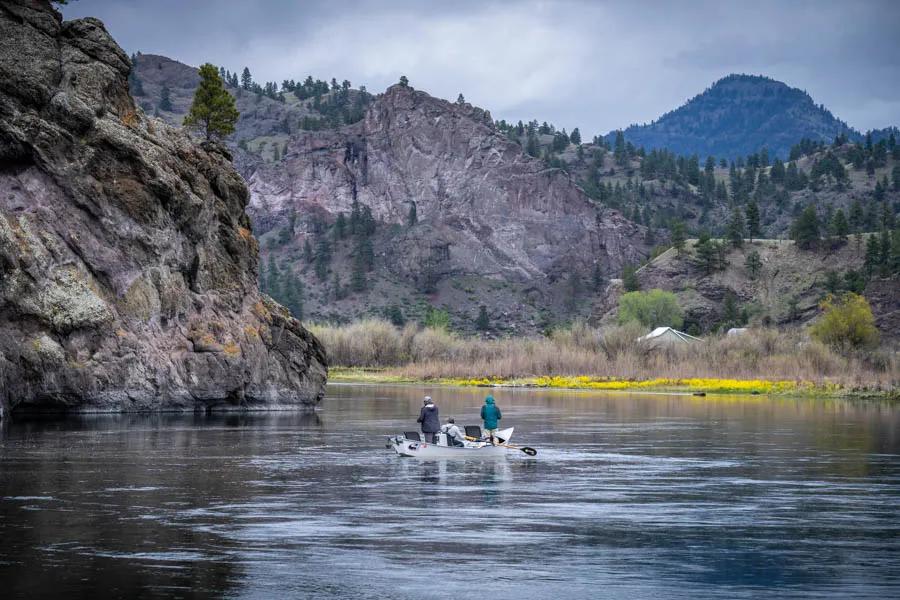
Tailwaters provide some of the most consistent fly fishing for trout in all of Montana. A tailwater fishery is created from the outflow of a dam on a large or small river. World-famous tailwater rivers like the Missouri and Madison Rivers often run clear and cold when freestones and smaller creeks do not. During periods of low water or high air temps or during snowmelt runoff, fishing a tailwater river can be a great option. Because tailwaters have streamflows regulated by dams, consistency is the name of the game. Trout--and the aquatic insect life on which they feed--are abundant in tailwater rivers. Fish counts on Montana's tailwater rivers are often higher than on freestones and typically tailwater rivers have abundant hatches and opportunities to catch trout in a variety of ways. Here are Five Top Tips for Fishing Tailwaters in Montana.
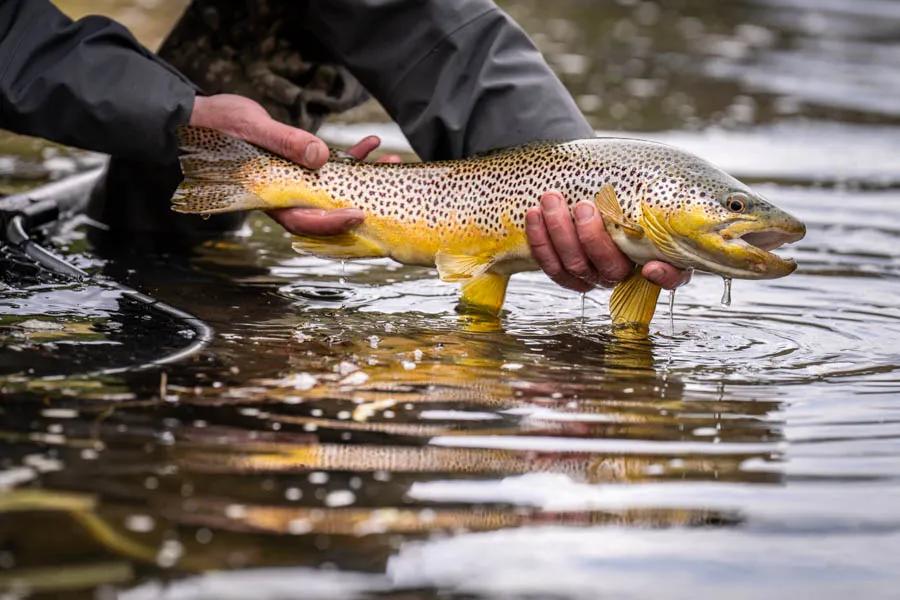
Master Your Presentation: Learn a Reach Cast
Because tailwaters have consistent flows and prolific hatches, ensuring your fly looks natural is crucial to success. The most important aspect of presentation is getting a good drift. This is most often started with a good cast and most good casts on tailwaters involve a reach cast. A reach cast creates slack in the line to allow the fly to drift naturally with the current, avoiding drag-- it is basically a cast where you add the mend in the air before the fly line lands on the water. To make a reach cast, stop the rod tip mid-cast, after the forward stroke, and then lay the line upstream or downstream of the fly, depending on the current. This helps the fly appear more natural to fish, increasing the chance of a strike watch this video to learn a reach cast:
Big Success by Choosing Small Flies
With abundant populations of small insects like midges, mayflies, caddis, and scuds and sowbugs, trout on tailwaters often key on smaller sources of food than on freestones and lakes. For example on Montana's Missouri River trout feed on midge pupa and larvae year-round. These insects average between size 18 and 22. On Montana's Upper Madison River near Ennis and Yellowstone National Park, and Pale Morning Dun and Blue Winged Olive mayflies hatch from spring through fall, yet trout feed on their nymphs year-round as well. These flies range from size 14 to 20. Even during a strong emergence of stoneflies and salmonflies on the Madison River, because there are so many mayfly nymphs in the water, trout continue to gobble up the small morsels.
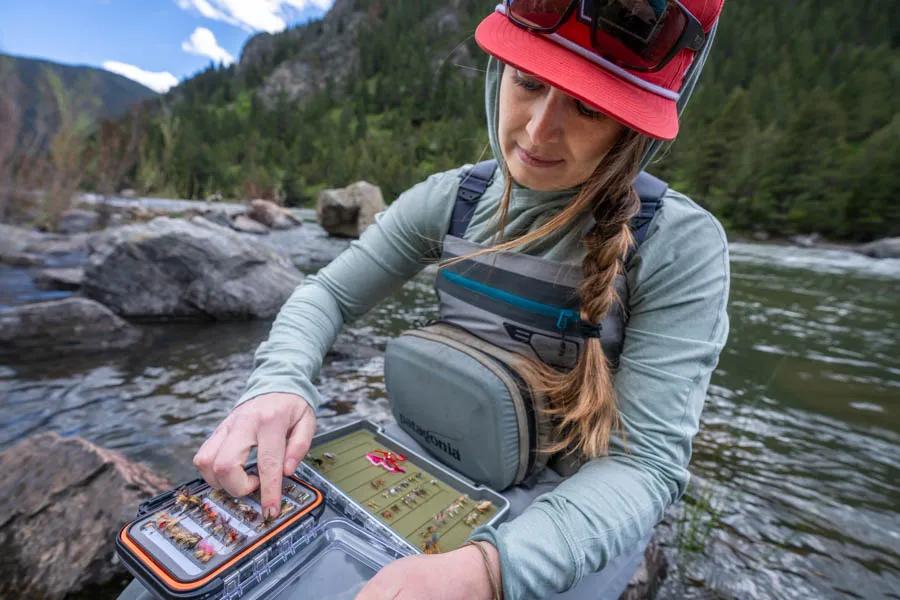
Update Your Tackle and Tippet Arsenal
Clear water and consistent flows are often the norm on tailwaters. With these also come prolific hatches. These three factors combine to make for selective trout. The silver lining is that tailwater trout feed with more intensity and longer duration than their freestone counterparts. In general, tailwater trout require longer leaders and lighter tippets often nothing heavier than 4X. Many longtime Montana fly fishing guides when fishing tailwaters start with a 9 foot 4X leader and then add some 5X tippet. If you are planning to fish subsurface flies on a tailwater river, always try to use fluorocarbon tippet. Fishing tandem nymph rigs is common on the Missouri and the Madison but to do it effectively have a selection of weight (split shot or moldable putty) that can be added to the leader to help sink the flies and get them to the ideal depth quickly.
Fishing Two Flies Increases Your Chance for Success
Whether you are fishing tandem subsurface nymphs or prospecting with dry flies, many longtime anglers immediately opt for a set-up that includes two flies. Fishing two flies on tailwaters allows you to fish two hatches or two stages of an insect. During a strong hatch a very popular tactic is to fish a high-floating dry fly combined with a weight fly or a fly that is meant to imitate an emerging insect. Many anglers on freestone rivers typically fish hoppers and droppers during the summer season, but when fishing tailwaters, using two flies should be standard practice any day of the year and regardless of any hatch activity because using two flies increases your odds of catching fish. Fishing a dry fly with a nymph tied to it is the standard dry-dropper rig and is now a proven tactic to catch more fish. But, like many things in fly fishing there are optimal times to use a dry-dropper rig and times when not to fish a dry-dropper rig. This sounds very simple, but there are a few tips for increasing the effectiveness of the dry-dropper technique. Here is some advice learned from our Montana fly fishing guides.
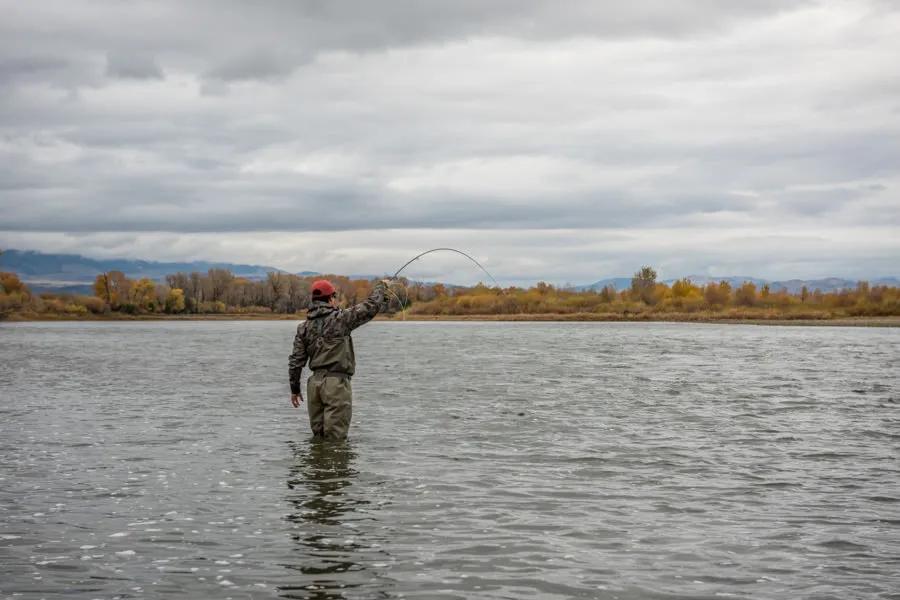
Get Better at Reading Water: Subtle Changes
With consistent streamflows and mostly uniform characteristics throughout the length of the river, you'd think it would be easy to read the water and find trout. Even on Montana's Upper Madison with its prolific fast riffles and boulder-strewn runs, the overall characteristic of streamflow is consistent. Because of this, the Upper Madison's most common nickname is the 50-Mile Riffle. Contrast the Upper Madison with the Missouri River, also a tailwater fishery, and the Missouri River appears slow, meandering, and almost lake-lake in sections. Although the Missouri River may appear slow and non-descript, the consistent flow and volume of streamflows often averaging 4,000 to 5,000 CFS during peak summer season, the Missouri River's consistency and deceptively mellow appearance gives it the moniker of the World's Largest Spring Creek. When reading water look for very subtle changes in flow. Picking out classic looking riffles, runs, and pools on tailwaters is not easy as it is on freestone rivers like the Yellowstone or Gallatin because on tailwaters with consistent flows the changes are often very subtle. These subtle changes can be caused by submerged and unsubmerged structure; current seams where two speeds of water meet; slight changes in depth--even a few inches can be the difference between a trout holding and feeding or not; eddies both fast and slow; foamlines because they congregate food; and anything else that might look fishy.
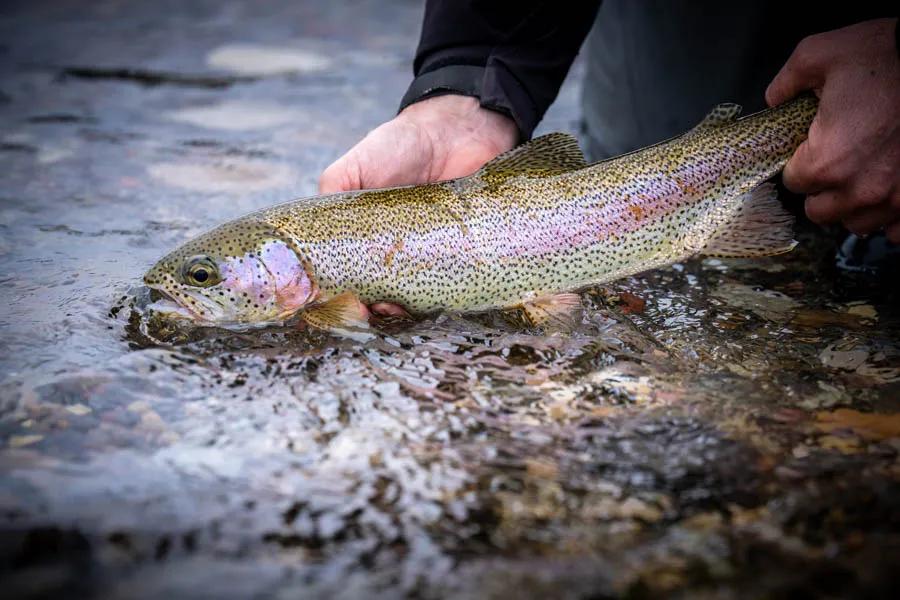
From the Bighorn River in southeastern Montana to the famously fishy Madison and Missouri Rivers in southwestern and central Montana, finding a place to fish is easy. But making sure you are fishing the right river at the right time takes a little more planning. A tailwater river is often a very good option due to its consistent flow and the typically cold, clear water--just be sure you do some homework and use these tips for fishing tailwater rivers in Montana. Whether you want to explore some lesser known tailwaters like the Ruby River or Beaverhead River or want a fly fishing guide on one of the larger rivers like the Madison or Missouri, there is often always some great Montana fly fishing options.
